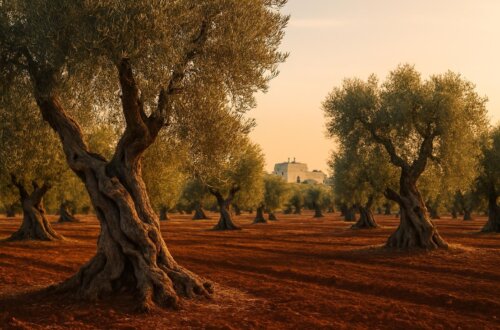
Wine Tasting in Crete: Discover the Island’s Ancient Vineyards and Modern Flavors
Picture yourself on a sunlit terrace overlooking the azure Mediterranean, a glass of crisp white wine in hand, with ancient vineyards stretching toward rugged mountains. This isn’t just any wine destination—this is Crete, where every sip tells a story that spans four millennia.
Wine tasting in Crete offers something truly extraordinary: the chance to experience one of Europe’s oldest winemaking traditions while discovering indigenous grape varieties you won’t find anywhere else on earth. From the mountain vineyards of Chania to the historic estates near Heraklion, the island produces over 12% of Greece’s total wine output, yet remains delightfully under the radar compared to more famous wine regions.
Whether you’re a seasoned oenophile or simply someone who appreciates a good glass with dinner, Crete’s wine scene combines ancient heritage with innovative modern techniques, organic practices, and breathtaking scenery. This guide will take you through the island’s best wineries, introduce you to unique Cretan grape varieties, and help you plan an unforgettable wine-tasting journey through one of the Mediterranean’s most captivating destinations.
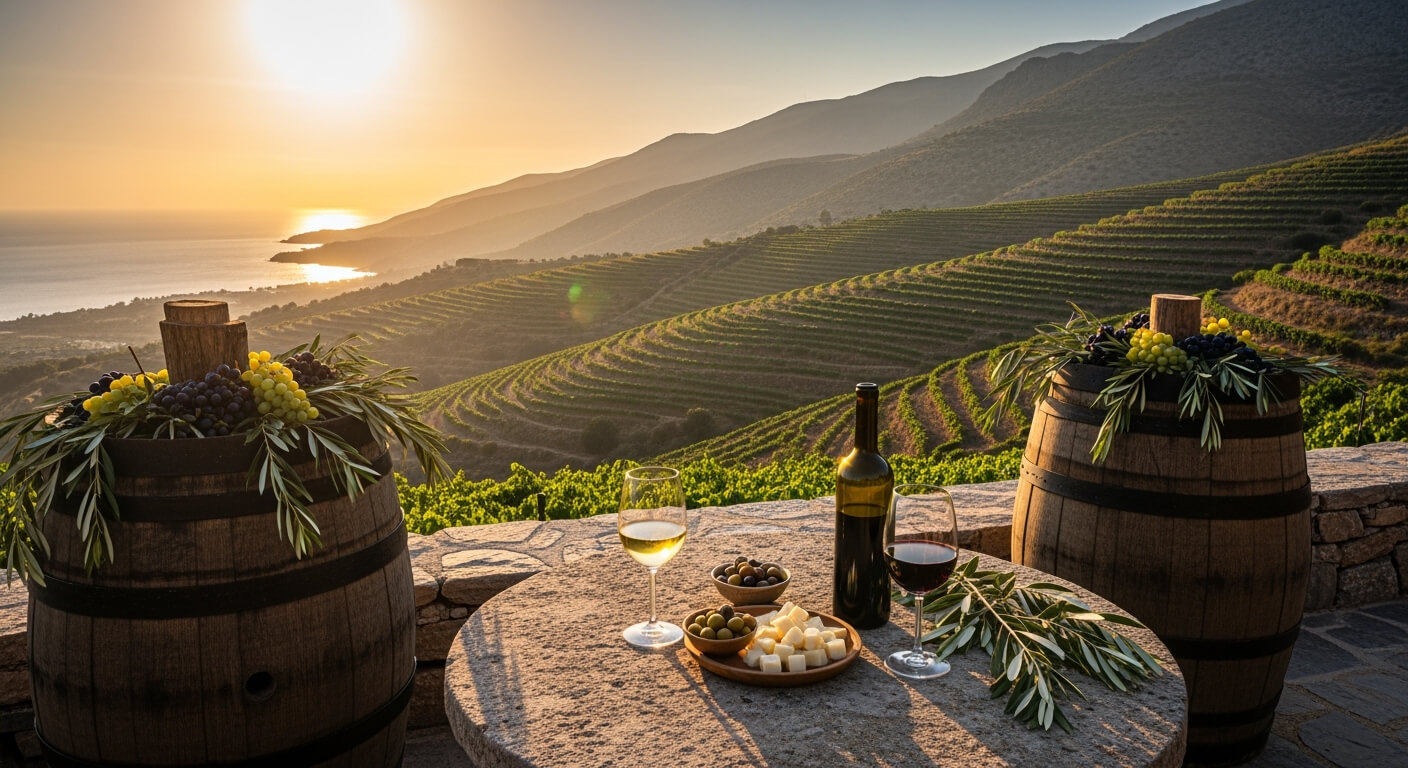
The History of Cretan Wine – From Minoans to Modern Makers
The story of Cretan wine begins long before most European vineyards even existed. Archaeological discoveries at the palace of Knossos and the ancient wine press at Vathypetro provide concrete evidence that Cretans were crafting wine as early as 2000 BCE—making the island one of the birthplaces of European viticulture.
The Minoans didn’t just make wine; they revered it. Ancient frescoes depict elaborate wine ceremonies, while massive clay vessels called pithoi stored wine in palace cellars. This wasn’t casual drinking—wine was central to religious rituals, trade, and daily life in one of the ancient world’s most sophisticated civilizations.
Fast forward to the Venetian occupation (1204-1669), and Crete’s wine industry experienced another golden age. The Venetians recognized the island’s winemaking potential, establishing extensive vineyards and exporting Cretan wines throughout their empire. Monasteries became centers of viticulture, with monks carefully cultivating vines and refining winemaking techniques that would influence the island for centuries.
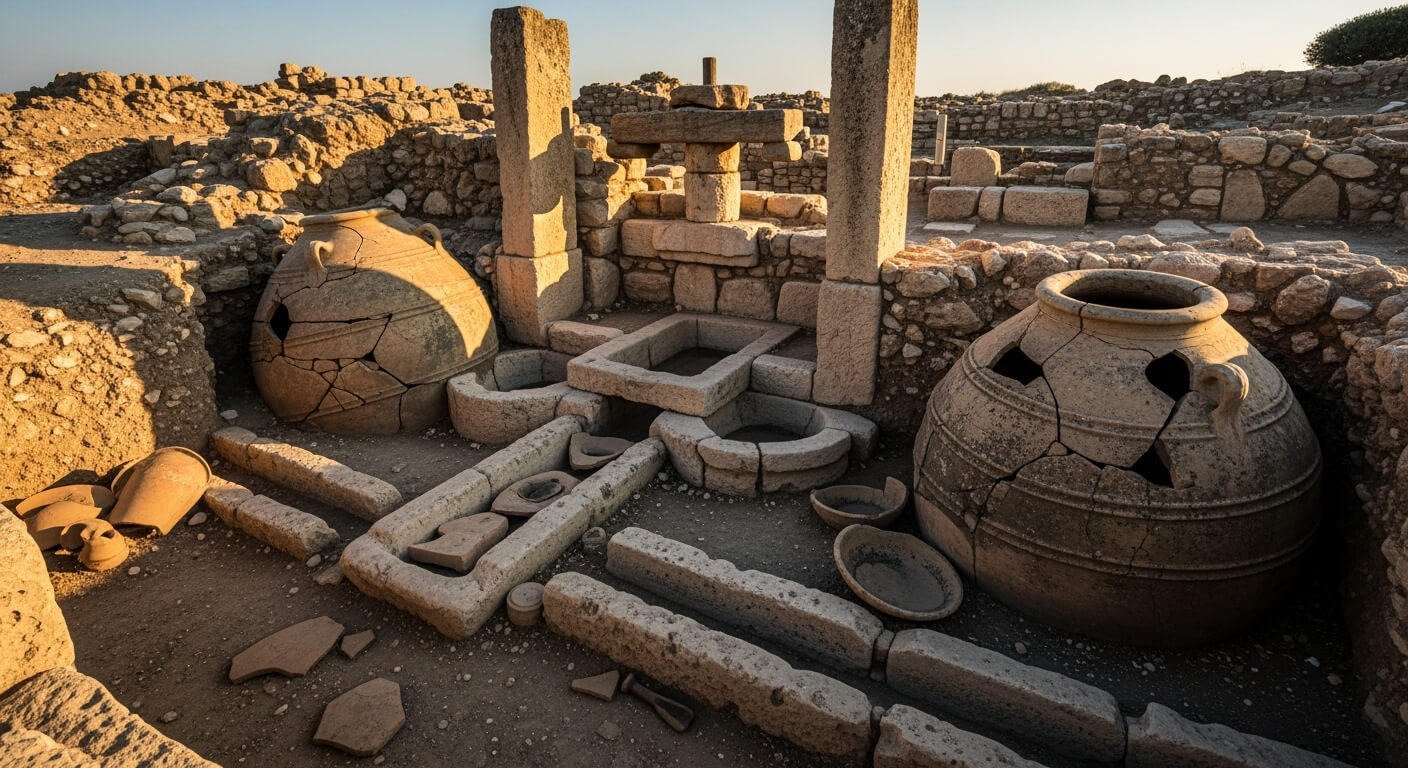
The modern era of Cretan wine, however, truly began in the late 20th century. After years of focusing on quantity over quality, a new generation of winemakers emerged in the 1990s and 2000s, dedicated to showcasing Crete’s unique terroir and indigenous grape varieties. Today, the island boasts four Protected Designation of Origin (PDO) regions:
- Peza – The largest PDO, known for both red and white wines
- Archanes – Produces exceptional reds from Kotsifali and Mandilari
- Dafnes – Famous for sweet Liatiko wines
- Sitia – Eastern Crete’s PDO, specializing in robust Liatiko reds
This renaissance has transformed Crete into a serious wine tourism destination, where small family producers work alongside established estates to create wines that honor ancient traditions while embracing modern sustainability and innovation.
Indigenous Grape Varieties – The Taste of Crete’s Terroir
What makes Cretan wine truly special isn’t just the history—it’s the grapes themselves. The island’s indigenous varieties have adapted over thousands of years to the Mediterranean climate, mountainous terrain, and mineral-rich soils, creating flavor profiles you simply cannot experience anywhere else.
White Grape Varieties
Vidiano has rightfully earned its reputation as the “queen of Cretan whites.” Nearly extinct just decades ago, this variety has made a remarkable comeback and now produces some of Greece’s most sophisticated white wines. Expect aromatic complexity with notes of white flowers, citrus, and stone fruits, balanced by refreshing acidity and a full body that can handle oak aging. Vidiano pairs beautifully with grilled sea bass, creamy feta dishes, or even mild curries.
Vilana represents the more approachable side of Cretan whites. Light, crisp, and refreshingly citrusy, Vilana is the perfect partner for a seaside lunch of fresh seafood, Greek salads, and grilled octopus. Its bright acidity cuts through olive oil and complements the herbs that define Cretan cuisine. Most Vilana is vinified in stainless steel to preserve its delicate aromatics and fresh character.
Thrapsathiri offers something more substantial—think fuller body, richer texture, and the ability to develop complex secondary flavors with age. Often blended with other varieties, Thrapsathiri brings structure and depth, with flavors ranging from ripe pear and almond to subtle honey notes. It’s excellent with richer fish dishes, chicken in lemon sauce, or aged local cheeses.
Red Grape Varieties
Kotsifali might be considered the friendlier red—soft tannins, approachable fruit, and lovely spicy notes make it immediately appealing. Often described as having red berry flavors with hints of pepper and Mediterranean herbs, Kotsifali is frequently blended with the more tannic Mandilari to create balanced, food-friendly reds perfect for Crete’s lamb dishes, slow-cooked stews, and grilled meats.
Mandilari brings the structure and backbone to many Cretan red blends. With deep color, bold tannins, and concentrated dark fruit flavors, Mandilari needs either blending or careful winemaking to tame its powerful nature. When done right, it produces age-worthy wines with impressive depth and complexity. The variety thrives particularly well in the eastern regions of Crete, especially around Sitia.
Liatiko stands apart as one of Crete’s most ancient and versatile varieties. Used to create everything from dry table wines to luscious dessert styles, Liatiko offers delicate red fruit flavors, floral aromatics, and gentle tannins. The sweet versions from Dafnes PDO are legendary—imagine concentrated cherry and fig flavors with hints of spice, perfect alongside local cheeses, honey-drizzled pastries, or simply on their own as a meditation wine.
Top Wine Regions in Crete – Where to Sip and Explore
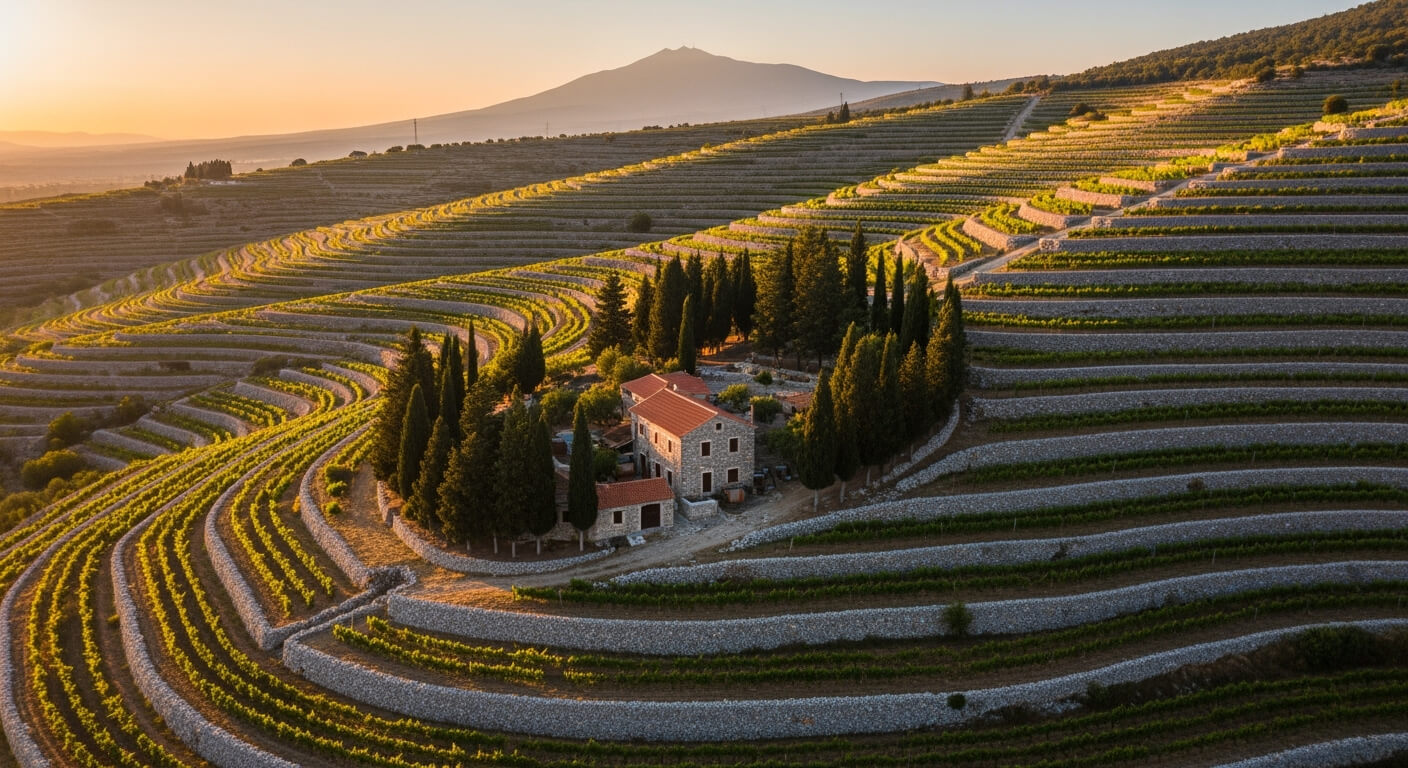
Crete’s wine regions each offer distinct personalities, shaped by microclimates, elevation, and local traditions. Here’s where to focus your wine-tasting adventures:
Heraklion – The Beating Heart of Cretan Wine
The Heraklion region dominates Cretan wine production, home to the prestigious Peza and Archanes PDO zones. The area benefits from ideal growing conditions—warm days, cool nights, and mineral-rich soils from ancient volcanic activity.
Must-visit wineries:
- Lyrarakis Winery – Pioneers in reviving indigenous varieties, offering extensive tastings and a museum showcasing traditional winemaking tools
- Boutari – One of Greece’s most established producers, with a beautiful estate perfect for understanding large-scale quality winemaking
- Douloufakis Wines – Family operation creating exceptional organic wines, with tastings that often include traditional Cretan meze
The proximity to Heraklion city makes this region perfect for day trips, with most wineries within 20-30 minutes of the capital.
Chania – Mountain Magic and Boutique Excellence
Western Crete’s wine scene centers around Chania, where higher elevations and mountain influences create distinctive growing conditions. The region has become known for boutique production and sustainable practices, with many wineries embracing organic and biodynamic viticulture.
Must-visit wineries:
- Manousakis Winery – Stunning location with modern facilities, producing exceptional Vidiano and international varieties, with tastings overlooking the White Mountains
- Karavitakis Wines – Multiple generations of winemaking expertise, offering intimate tastings that feel like visiting family
The Chania wine route combines beautifully with visits to Venetian harbors, mountain villages, and some of Crete’s most beautiful beaches.
Rethymno – The Emerging Star
Often overlooked, Rethymno is rapidly gaining recognition for elegant wines, particularly outstanding Vidiano expressions. The region’s varied terrain—from coastal plains to mountain slopes—allows for diverse wine styles.
Must-visit:
- Kourkoulou Winery – Small, family-run operation producing remarkable wines with minimal intervention, offering genuine hospitality and insight into traditional methods
Rethymno’s wine experiences often combine beautifully with the region’s historic towns, traditional villages, and excellent tavernas.
Lasithi – Off the Beaten Path
Eastern Crete remains the island’s least touristed wine region, which is precisely its charm. Home to the Sitia PDO, this area specializes in powerful Liatiko and Mandilari reds that reflect the region’s hot, dry climate.
Must-visit:
- Economou Estate – Cult producer crafting natural wines using ancient methods, including aging in buried amphorae. Visits require advance booking but offer an unforgettable glimpse into truly traditional winemaking.
The Best Wine Tasting Experiences in Crete

Wine tasting in Crete goes far beyond simply sipping and swirling. The island’s approach combines wine with culture, food, and landscape in ways that create truly memorable experiences.
Winery Tours with Soul
Most Cretan wineries offer guided tours that walk you through their vineyards, explaining how indigenous varieties thrive in the island’s unique conditions. You’ll typically see:
- Traditional and modern winemaking equipment side by side
- Barrel rooms where wines age in French and American oak
- In some cases, ancient wine presses or museum exhibits
- Family stories spanning generations of winemaking
These tours usually conclude with structured tastings of 3-6 wines, often accompanied by local cheeses, olives, and traditional dakos (Cretan rusks with tomato and olive oil).
Food Pairing Experiences
The best wineries have recognized that Cretan wine shines brightest alongside Cretan food. Many now offer:
- Farm-to-table lunches featuring ingredients from their own gardens paired with their wine range
- Olive oil and wine tastings that showcase the complementary nature of Crete’s two most important products
- Traditional meze pairings with local cheeses, cured meats, and vegetable dishes that highlight regional cuisine
These extended experiences typically last 2-3 hours and provide genuine insight into the Mediterranean diet’s principles and Crete’s culinary philosophy.
Cultural Wine Experiences
Time your visit right, and you can participate in authentic wine traditions:
- Harvest experiences in late August through September, where some wineries welcome visitors to pick grapes and learn about the harvest process
- The Dafnes Wine Festival in July celebrates Liatiko wines with traditional music, dancing, and unlimited tastings
- Pressing ceremonies where traditional methods are demonstrated and celebrated
Sustainable Wine Tourism
Crete’s wine industry increasingly embraces sustainability, with numerous organic and biodynamic producers offering eco-conscious experiences:
- Tours explaining organic viticulture principles
- Tastings of wines made with minimal intervention and indigenous yeasts
- Educational sessions on water conservation and biodiversity in vineyards
- Farm stays where you can experience the complete cycle of sustainable agriculture
Pro tip: Book your winery visits in advance, especially during peak season (July-August). Morning visits are ideal—temperatures are cooler, and palates are fresher. Most wineries are closed on Sundays.
Tips for Planning Your Wine Tour in Crete
Successfully navigating Crete’s wine regions requires some planning. Here’s how to make the most of your wine-tasting adventure:
Best Time to Visit
April to June offers perfect conditions—warm weather, blooming vineyards, and fewer crowds. Spring visits let you see vines in their active growing phase.
September to October is harvest season, the most exciting time to visit. You’ll witness the vintage in action and experience the energy that defines this crucial period. Many wineries offer special harvest experiences.
July and August are peak tourist season—expect crowds and heat. Book well in advance and schedule tastings for morning hours.
November to March sees many smaller wineries close or operate limited hours, though established estates remain open year-round.
Transportation and Logistics
Crete’s wine regions are spread across the island, making transportation a key consideration:
Renting a car provides maximum flexibility but requires a designated driver. Many couples or groups rotate who drives to ensure everyone can taste.
Organized wine tours solve the driving issue and often provide expert guides who enhance the experience with local knowledge. Tours range from half-day excursions to multi-day wine and gastronomy adventures.
Private drivers can be hired for custom itineraries, offering the personalization of self-guided tours with the convenience of professional transportation.
Suggested Itineraries
One-Day Heraklion Wine Route:
- 10:00 AM – Lyrarakis Winery for tour and tasting
- 1:00 PM – Lunch at traditional taverna in Archanes village
- 3:00 PM – Douloufakis Winery for afternoon tasting
- Evening – Return to Heraklion via Knossos Palace (combining wine and history)
Three-Day Wine and Gastronomy Getaway:
- Day 1: Heraklion region wineries with evening in traditional village
- Day 2: Chania mountain vineyards and coastal wineries, sunset in Chania old town
- Day 3: Rethymno region with farm-to-table winery lunch
Tasting Etiquette and Practical Tips
Make your wine-tasting experiences more rewarding with these insider suggestions:
- Pace yourself – Limit to 2-3 wineries per day to avoid palate fatigue
- Ask questions – Cretan winemakers love sharing their knowledge and stories
- Buy directly – Winery prices are often better than retail, and you’ll support producers directly
- Bring water and snacks – Stay hydrated between tastings
- Wear comfortable shoes – Many vineyard tours involve walking on uneven terrain
- Don’t wear strong perfume – It interferes with wine aromas
- Spit or pour out if needed – Professional tasters do this, and it’s perfectly acceptable
Beyond the Glass – Pairing Cretan Wine with Local Cuisine
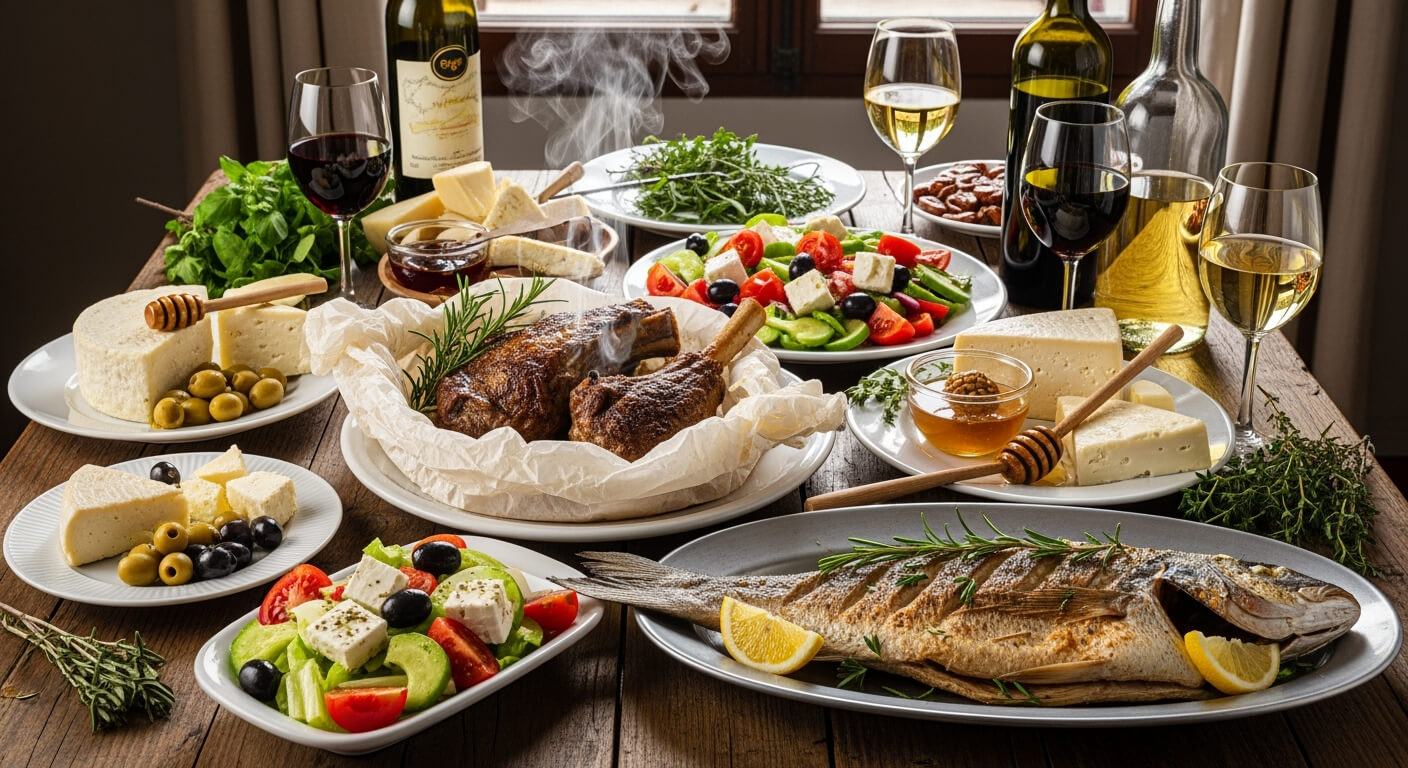
The true magic of Cretan wine reveals itself at the dinner table. The island’s cuisine and wines have evolved together for millennia, creating natural harmonies that showcase both elements beautifully.
Perfect Pairings to Try
Vidiano with Seafood: The wine’s aromatic complexity and refreshing acidity make it ideal for grilled fish, seafood pasta, or htapodi (grilled octopus). The wine’s body can handle richer preparations like fish baked with tomatoes and olives.
Vilana with Fresh Salads: Think Greek salad (horiatiki), grilled vegetables, or dakos. This wine’s crisp, uncomplicated character lets fresh ingredients shine while cleansing the palate between bites.
Kotsifali with Lamb: Whether it’s slow-roasted kleftiko, grilled chops, or traditional antikristo, Kotsifali’s soft tannins and spicy character complement lamb’s richness without overwhelming delicate flavors.
Mandilari Blends with Stews: Rich preparations like stifado (beef stew with onions) or wild boar match these wines’ structure and concentrated flavors.
Liatiko Dessert Wines with Sweet Endings: Try sweet Liatiko with mizithra cheese drizzled with honey, loukoumades (honey puffs), or traditional kalitsounia (sweet cheese pastries).
The Mediterranean Diet Connection
Crete is considered the birthplace of the Mediterranean diet, and wine plays an integral role. The island’s approach to food emphasizes:
- Seasonal, locally sourced ingredients
- Abundant olive oil (often from the same estates producing wine)
- Wild greens and herbs foraged from hillsides
- Minimal processing and maximum flavor
This philosophy extends to winemaking, where many producers farm organically, use indigenous yeasts, and minimize intervention to let terroir speak clearly.
Why Crete Should Be on Every Wine Lover’s Map
Crete offers something increasingly rare in wine tourism: authenticity combined with world-class quality. While more famous wine regions become crowded and commercialized, Crete remains refreshingly genuine. Here, you’re likely to taste wine with the winemaker themselves, often in their family home or modest tasting room.
The island’s wine scene successfully bridges ancient and modern. You can visit archaeological sites where wine was made 4,000 years ago, then taste contemporary wines from those same indigenous varieties, crafted using cutting-edge techniques by passionate young winemakers honoring their heritage.
Beyond the wines themselves, Crete’s wine tourism integrates seamlessly with the island’s other attractions. Combine winery visits with:
- Archaeological wonders like Knossos and Phaistos
- Stunning beaches along both north and south coasts
- Mountain villages where time seems to have stopped
- Traditional tavernas serving food that defines Mediterranean cuisine
- Warm Cretan hospitality that makes visitors feel like family
The competitive pricing adds appeal—exceptional wine experiences here cost a fraction of what you’d pay in Tuscany, Bordeaux, or Napa, yet deliver equal quality and more intimate, personal encounters.
Discover Authentic Crete, One Sip at a Time
Wine tasting in Crete offers far more than just discovering excellent wines—though you’ll certainly do that. It’s an invitation to connect with an island where wine culture has flourished for four millennia, where every bottle tells stories of ancient civilizations, family traditions, and dramatic Mediterranean landscapes.
Whether you’re swirling Vidiano on a mountain terrace overlooking the Libyan Sea, learning about organic viticulture from a fourth-generation winemaker, or pairing Kotsifali with slow-roasted lamb in a traditional village taverna, you’re participating in something special. Crete’s wine scene remains wonderfully unpretentious—focused on quality, tradition, and sharing genuine hospitality rather than impressing with fancy facilities.
Make room in your Crete itinerary for at least a day devoted to wine exploration. Your palate will discover flavors found nowhere else on earth, your understanding of Greek wine will deepen immeasurably, and you’ll create memories infused with the warmth of Cretan sun and the generosity of Cretan people.
So raise a glass of ancient Liatiko or aromatic Vidiano, toast to the island’s remarkable wine heritage, and discover why Crete deserves its place among Europe’s most compelling wine destinations. Yamas! (Cheers!)



